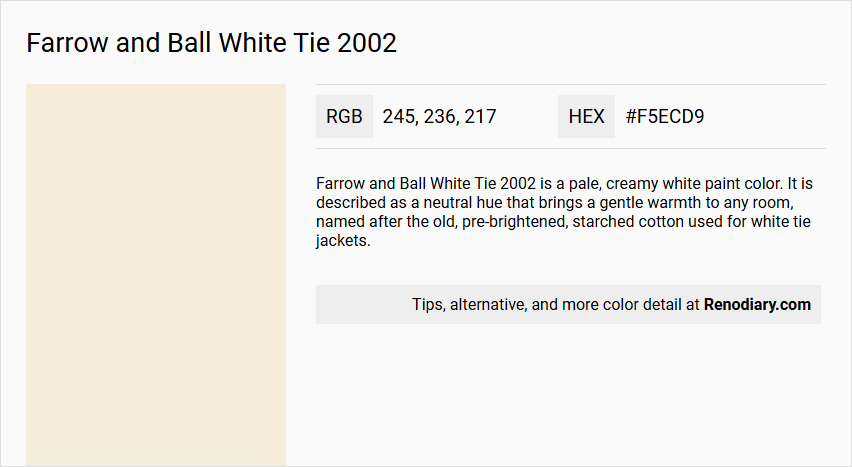
Farrow and Ball's White Tie 2002 is a sophisticated shade that elegantly balances warmth and subtlety, characterized by its creamy undertones. Its RGB composition of 245, 236, 217 perfectly captures the essence of classic cream, providing a versatile backdrop for both modern and traditional interiors. This particular hue reflects natural light beautifully, enhancing the ambience of any space with a soft, inviting glow.
Color Description
Farrow and Ball White Tie 2002 is a pale, creamy white paint color. It is described as a neutral hue that brings a gentle warmth to any room, named after the old, pre-brightened, starched cotton used for white tie jackets.
Undertones
- Some sources indicate that it has a red undertone.
- Other sources suggest that it has yellow undertones, which contribute to its warm and creamy appearance.
Color Values
- HEX: #F5ECD9 (another source lists #EEE7D6)
- RGB: 245, 236, 217 (or 238, 231, 214 according to another source)
- CMYK: 0, 3, 10, 7
- Light Reflectance Value (LRV): Approximately 80
Usage
- Works well in open concept spaces and rooms with a lot of natural lighting.
- Suitable for traditional, transitional, and country styles.
- Can be used on walls, ceilings, and even on furniture like kitchen cabinets.
Atmosphere
- Makes rooms feel light, airy, and soft.
- Complements a range of colors, including soft blush tones, subtle greys, deep navy blues, rich earthy browns, and vibrant greens.
- Creates a serene and inviting ambiance, especially in spaces with ample natural light.
Farrow and Ball White Tie 2002 Color Alternative
Farrow and Ball White Tie 2002 offers a balanced hue that evokes both warmth and sophistication in any space. Designers seeking subtle variations frequently choose alternatives such as Tikkurila Acropolis F458, Tikkurila Dough F398, and Dulux Almond White to complement diverse lighting and decor. These color alternatives provide a flexible palette, allowing homeowners to retain the elegant essence of Farrow and Ball White Tie 2002 while adding layers of texture and nuance to their interiors.
Bathroom
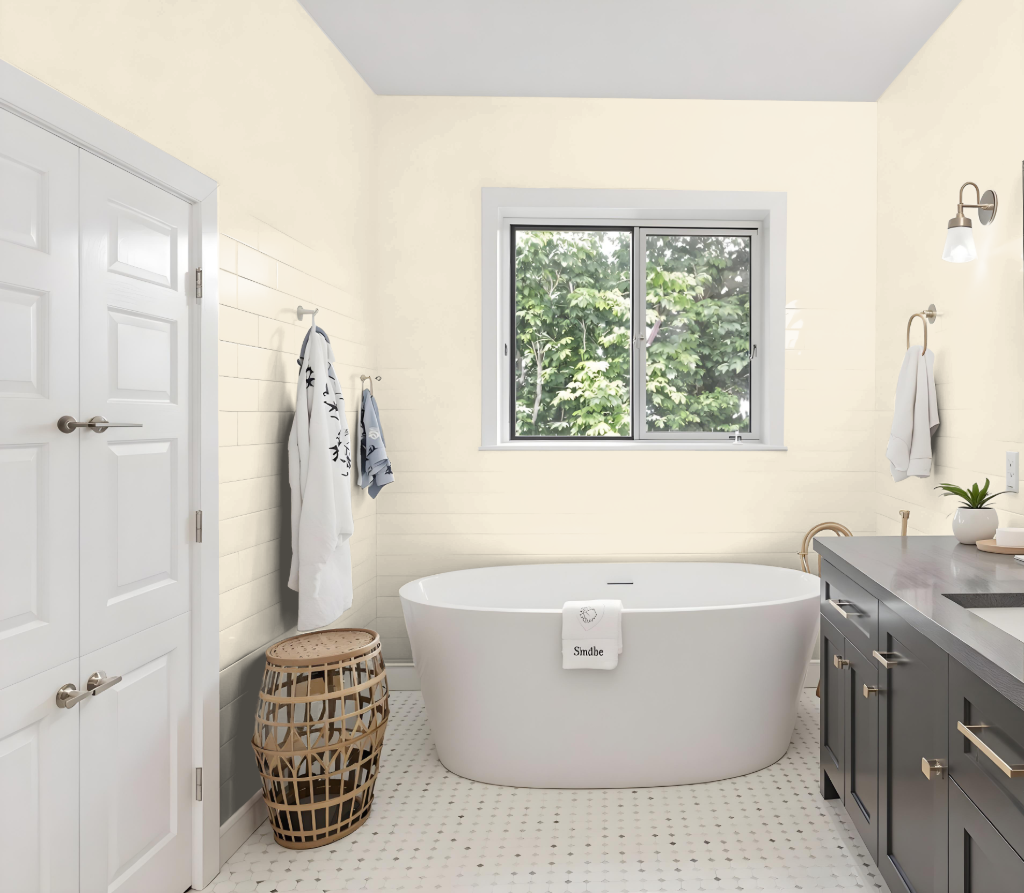
Farrow and Ball's White Tie 2002 is an attractive choice for a bathroom, offering a distinctive red undertone that subtly shifts with different lighting conditions. Although it belongs to a formulation more suited to decorative spaces, its unique hue can enhance the look of your bathroom with the proper application and preparation.
When selecting this option, be mindful that its underlying finish differs from options specifically engineered for areas with higher moisture. Careful surface preparation using a quality primer and undercoat is essential to improve its durability and washability in the bathroom setting.
Bedroom
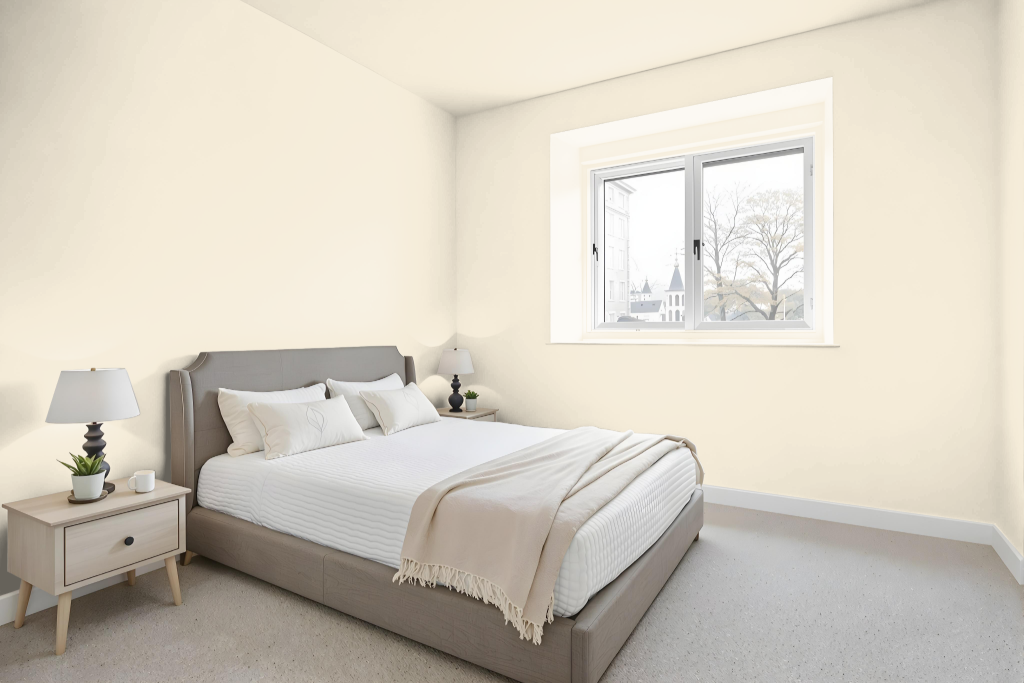
Farrow and Ball White Tie 2002 is an excellent choice for a bedroom color, creating a warm, inviting atmosphere that infuses soft light into the space. Its calming quality effortlessly brightens open concept areas and rooms with ample natural lighting, making spaces feel airy and serene.
This color pairs beautifully with complementary shades such as rich earthy browns or vibrant greens, establishing a harmonious ambiance tailored to traditional, transitional, or country-inspired decors. For an enhanced, cohesive look, consider accentuating the walls with complementary trim hues and using a primer and undercoat to achieve a rich, lasting finish.
Kitchen
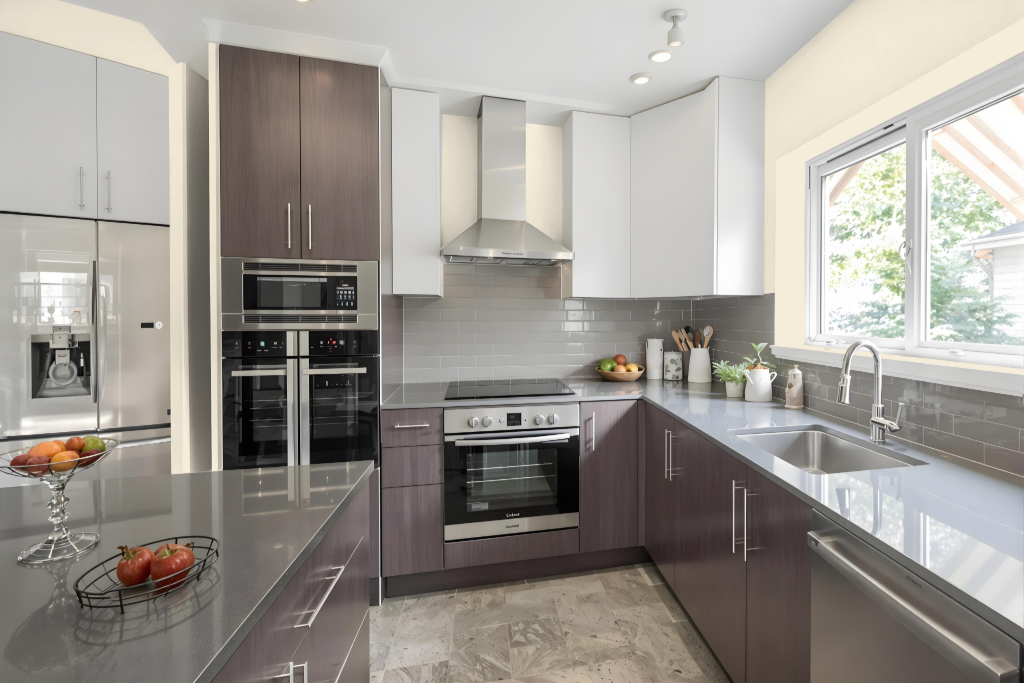
Farrow & Ball White Tie 2002 is an excellent choice for a kitchen color scheme, offering a warm and inviting tone that enlivens spaces with ample natural light. This shade creates an airy, soft atmosphere that enhances open concept designs, making rooms feel light and welcoming.
It pairs beautifully with complementary hues such as delicate blush tones, subtle greys, and deep navy accents to establish a harmonious environment. Additionally, its refined character makes it a standout option for kitchen cabinets, adding a gentle touch of sophistication to the overall decor.
Living Room
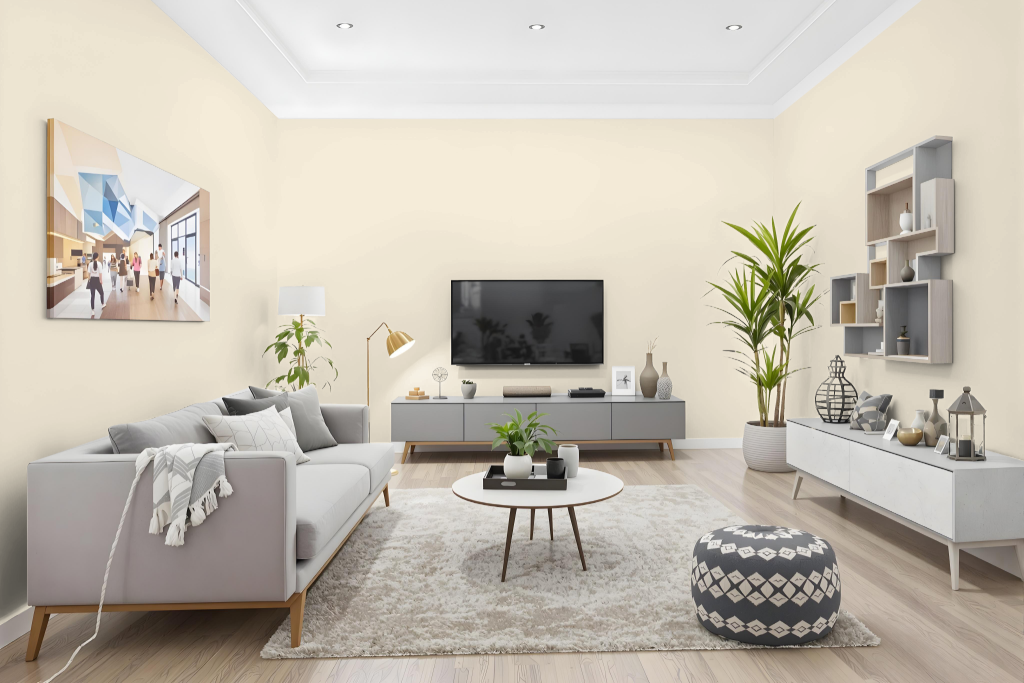
Farrow & Ball White Tie 2002 elevates living rooms, lending a fresh, light, and airy ambiance that enhances open concept areas and spaces with ample natural light. Its soft appearance creates a gentle, inviting atmosphere that adapts gracefully to different lighting conditions throughout the day.
Ideal for traditional, transitional, and country-style interiors, this color pairs beautifully with complementary shades to form a delicate and cohesive scheme. It can be applied on walls, ceilings, furniture, and even exterior surfaces in various finishes to suit a range of decorative needs and traffic levels.
Outdoor
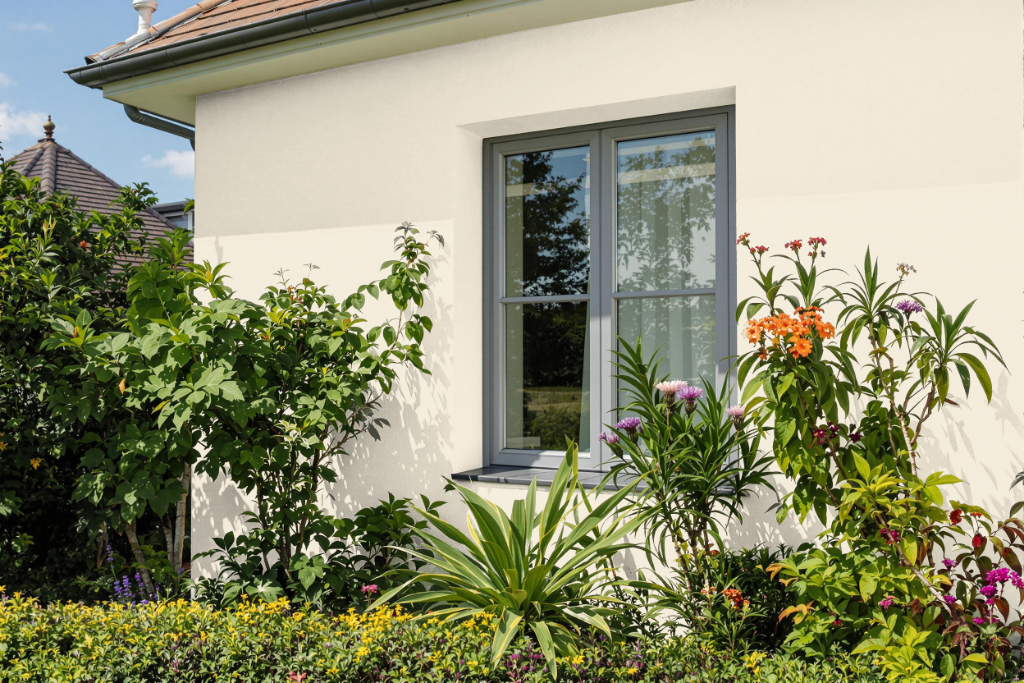
Farrow and Ball White Tie 2002 is intended for interior use and does not provide the durability required for home outdoor applications. Its formulation is not designed to withstand weather conditions or offer adequate protection for surfaces exposed to the elements.
For exterior projects, Farrow and Ball suggests using their paint finishes specifically engineered for outdoor conditions. These options are developed to be water‑resistant, breathable, and robust against the challenges of various climates and surface materials.

